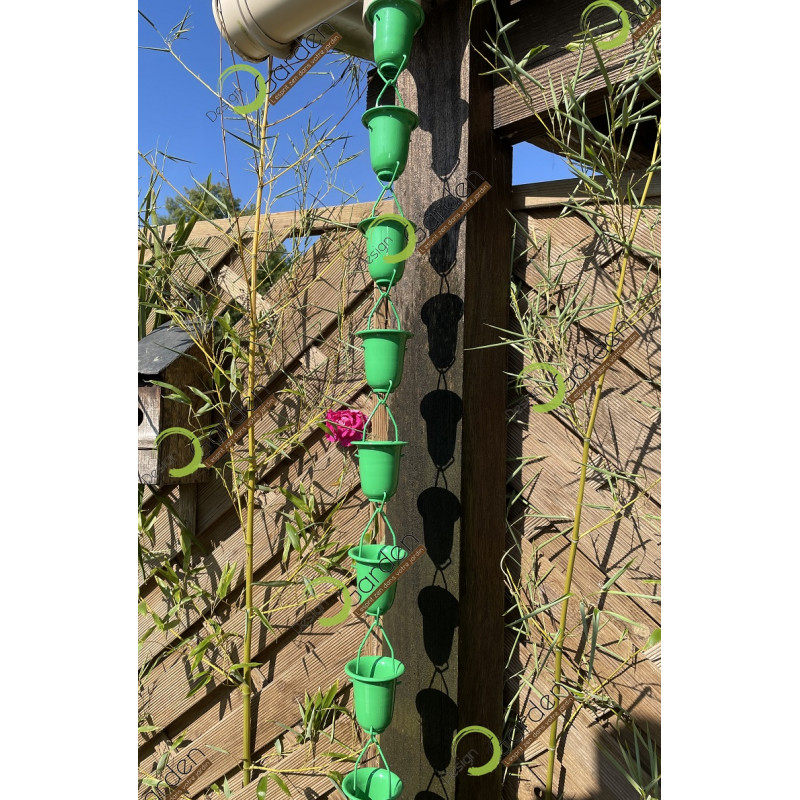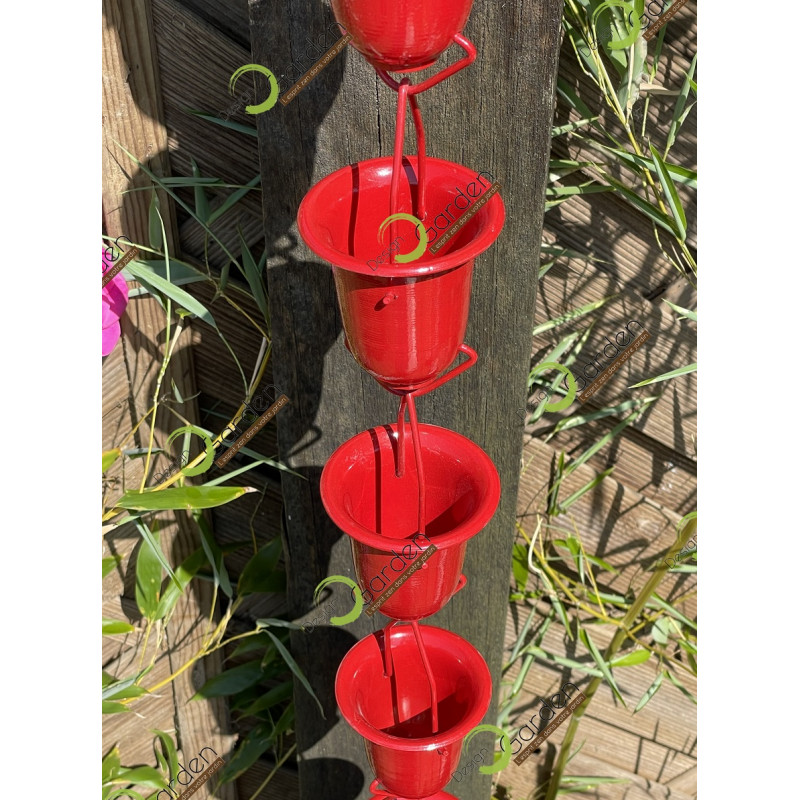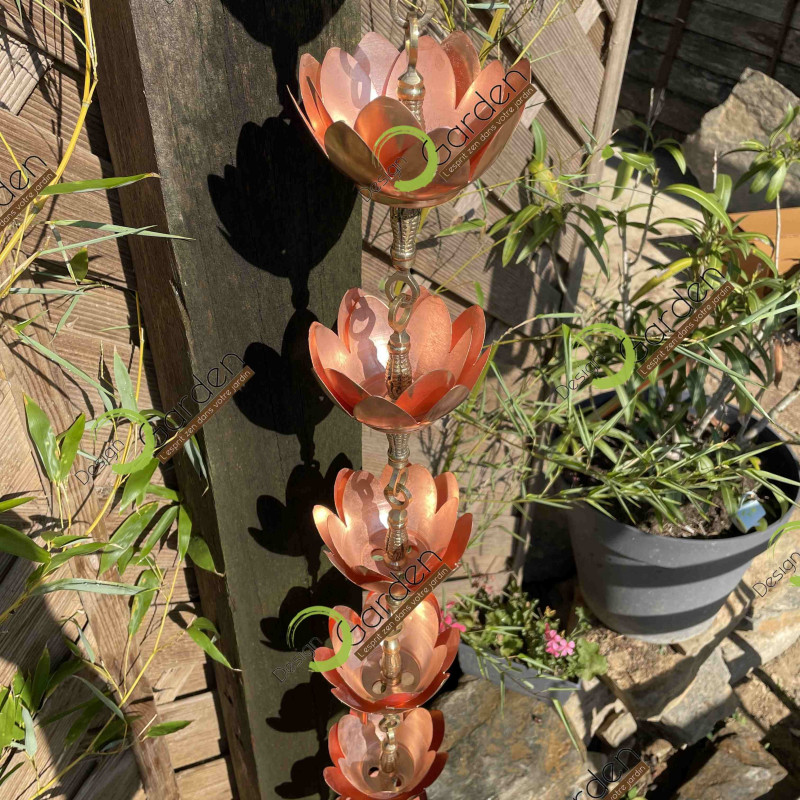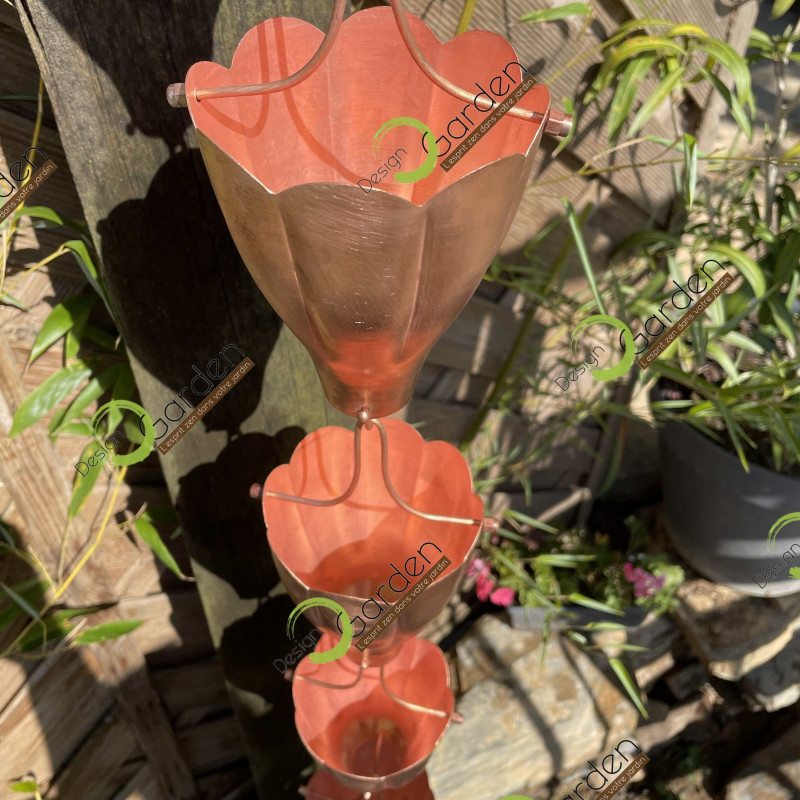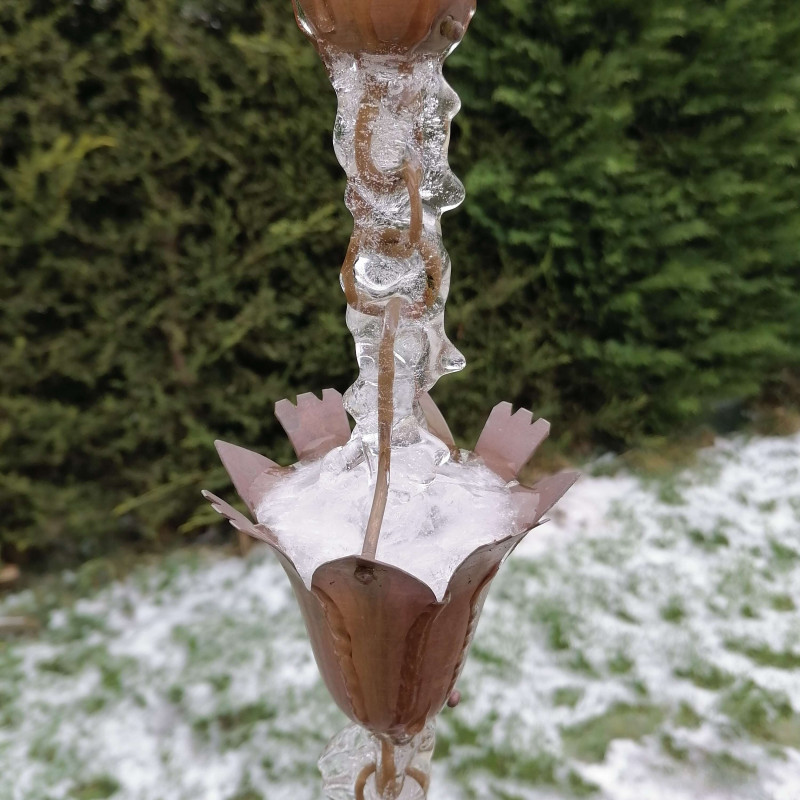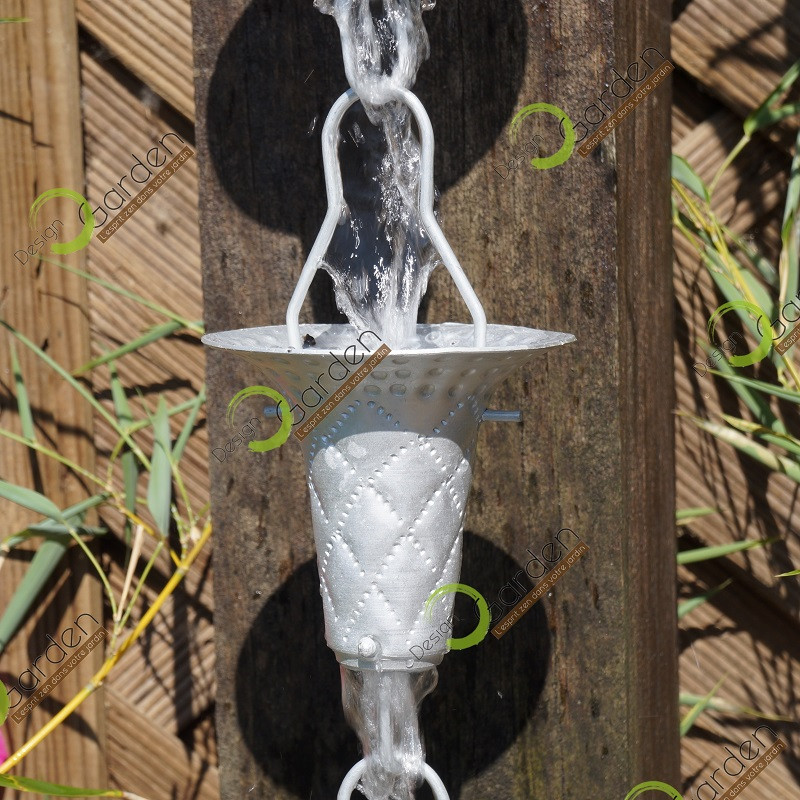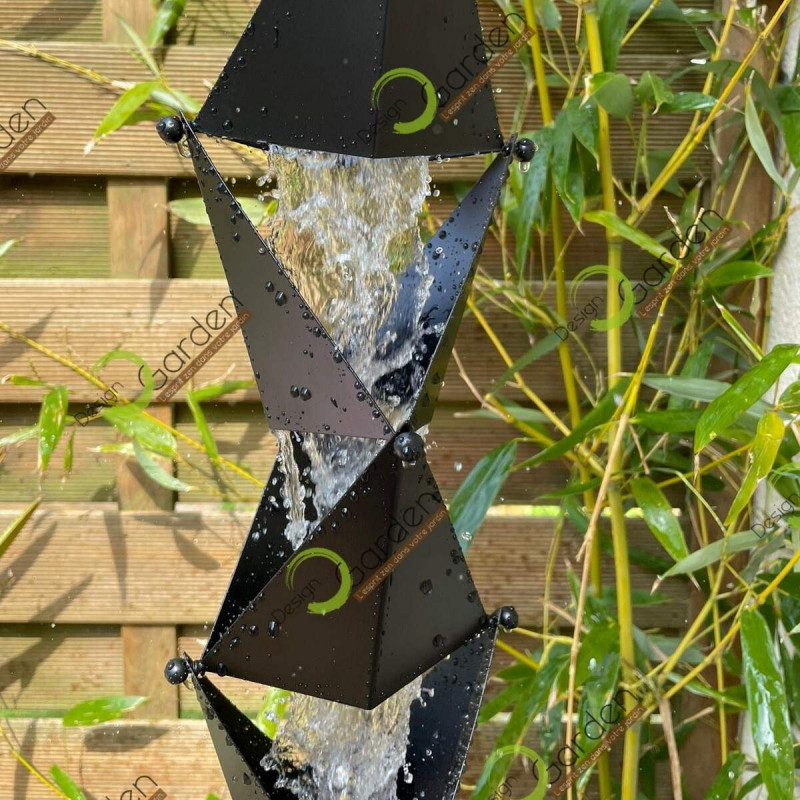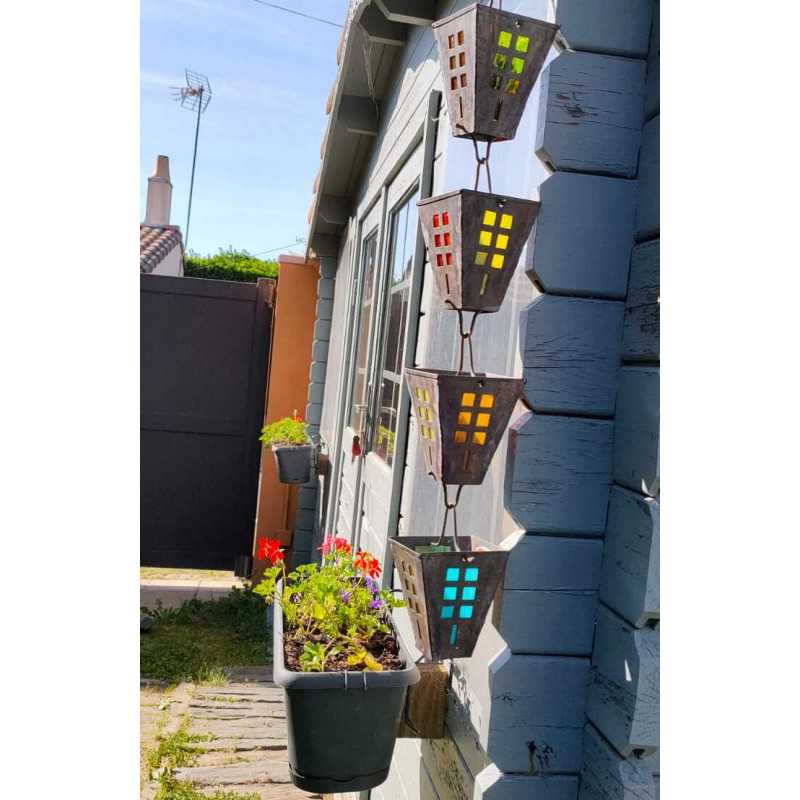VIEW STORE
 Présentation :
Présentation :
Originating in Japan, rain chains have adorned Japanese temples for centuries.
A product of Japanese traditions and local craftsmanship, they are also increasingly present in our country on private homes, garden sheds, showrooms and architectural or industrial buildings.
 Rain Chain, a bit of history:
Rain Chain, a bit of history:
An elegant and functional alternative to the drainpipes and gutters we know in France, the rain chain brings a touch of originality and undeniable design to your rainwater drainage system.
Both a design gutter and a top-of-the-range gutter, the rain chain comes to us from Japan. It is traditionally installed on their temples to evacuate rainwater. Known as KusariDoi, it is highly prized by the Japanese, and an integral part of their Feng Shui art of living. For hundreds of years, they have been collecting rainwater, and have set up an ingenious system for collecting and channelling it into barrels for domestic use.
Highly ornate and elaborate, Japanese rain chains can come in large sizes, making them veritable garden ornaments that are both Zen and designer.
The rain chain concept has also been spotted in South America, where it is easier and less costly to install than water drainage gutters.
 How does a rain chain work?
How does a rain chain work?
The rain chain is made up of cups (Design O Garden offers 3 categories: Large cups, Small cups and Rings) linked together by a chain. Water is collected directly in a gutter from the roof, then conveyed to the ground by these small metal containers, with holes in the bottom allowing the water to flow along the chain that connects them.
The rain chain guides the water to the water collectors on the ground, or directly to the rainwater evacuation system present on all detached and single-family homes. The rain chain plays the role of the downspout, replacing it and adding real aesthetic and design value. As the water runs off, it makes the cups, originally made of copper (but also available in aluminum and stainless steel), tinkle, creating a sound spectacle in its own right.
More aesthetically pleasing than simple water links and chains, the cups are also more effective at channelling the flow. Along the chain, and as you move from one rain cup to another, the tinkling sound becomes soothing, contributing to the Zen and Feng Shui spirit of your garden.
 Rain chains now available in Europe
Rain chains now available in Europe
Still not widely used in France, this ancestral Japanese process is beginning to win over more and more private customers, who are keen on Zen gardens and want to add a touch of originality to their outdoor décor. Perfectly suited to rainwater harvesting systems and the increasingly aesthetic drip trays on the market, rain chains are winning over many French people. The choice of rain cups and dishes is also increasingly varied, and the prices are also very attractive.
Size, composition, the rain chain is both an original gift and a real alternative to unattractive downspouts. Design and adding a zen dimension to your outdoor décor and garden, the rain chain blends perfectly with both modern and more rustic environments.
The cup system offers added value, both in terms of efficiency and aesthetics, compared to more basic water chains with links. Installation in your home's drainage system is simple. Rain chains are installed in just a few minutes, hanging directly from the hole where the downpipe is located, using a complete installation kit. Functional, rain chains add personality and refined style to your outdoor décor.
 The importance of choosing the right materials
The importance of choosing the right materials
The function of the Japanese downspout, as we've just seen, is to channel water and let it trickle down to your manhole or rainwater collector. The choice of material is therefore a crucial stage in the manufacture of rain chains.
Design O Garden offers downspouts in pure copper and pure aluminum. These materials ensure that your rain chain will withstand constant exposure to humidity and will not suffer the effects of oxidation. We advise you not to install steel rain chains, as they are sure to develop traces of rust and alter their effectiveness. In the same way, you can find on certain platforms rain chains that are less expensive but designed with much less resistant alloys.
We invite you to visit our Blog for more information on rain chains, their materials and installation.


